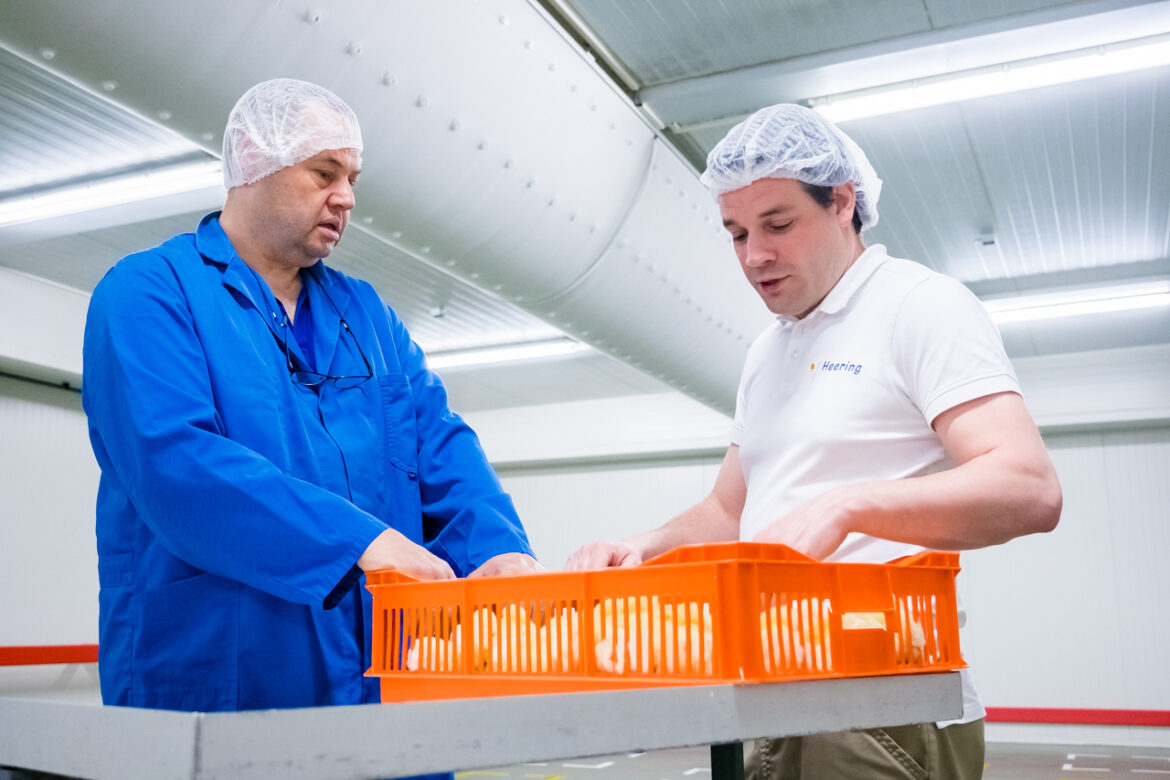
During transit, birds can experience a higher level of stress resulting in serious welfare issues. To prevent these complications it is important to understand the matter deeply and act accordingly by utilizing the proper transport equipment.
Transport stress among poultry
The study “Welfare of Poultry during Transport” that was executed for the Food and Agriculture Organisation of the United Nations found that the biggest threat for poultry welfare during transport is temperature stress. This can either be caused by elevated thermal loads or insignificant heating in the load space. Another factor is the rapid growth rate of modern breeds or strains of poultry, that comes with a higher basal metabolic rate, through which these birds experience a reduced heat stress resistance. Besides the significantly weighing effects of thermal stress, also the exposure to vibrations and accelerations have a negative effect on the welfare of birds during transport.
Welfare problems during poultry transport
A decrease in bird welfare due to transport stress can result in a number of complications. In challenging weather conditions it can lead to an increase in mortality. Mortality rates can also go up when the transported birds are exposed to hostile thermal micro-environments. Stress among chicks can increase certain pathologies, while existing disorders can be intensified. A decrease in muscle/meat quality is also a common complication that can occur during poultry transport.
Practical causes of transport stress
The study numbered a couple of causes for welfare problems during poultry transport. Poor vehicle and transport container design is seen as one of the most likely reasons. Inadequate control of the on-board thermal micro-environment and inferior ventilation systems are frequent causes as well. A lack of suitable climate control can be especially harmful when transporting modern breeds of poultry, since they are less resistant to temperature stress. The disturbance and temperature fluctuations during loading and unloading are other known sources of stress during chick transport.
Maintaining poultry welfare during transport
In order to maintain the welfare of birds in transit the level of transport stress needs to be minimized. The transport system should be equipped with necessary climate control devices, such as an effective ventilator and sufficient cooling and heating systems, to maintain a stable micro-environment. The temperature in the loading space should be monitored by professionals in order to ensure stability at all times. This will reduce temperature stress among chiks significantly, which prevents further welfare and production problems. Usage of a proper chassis and an experienced driver with proper training will reduce the exposure to vibrations and accelerations during transit.
At Heering we design our products based on a deep practical and theoretical knowledge of poultry and by putting poultry welfare first.
Interested in how we can help you improve poultry welfare during transport? Feel free to reach out to us.